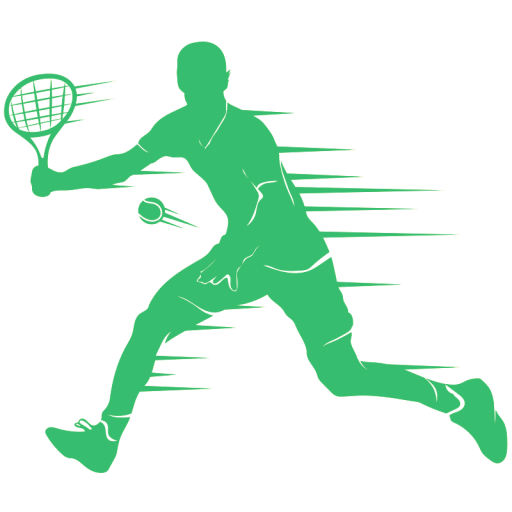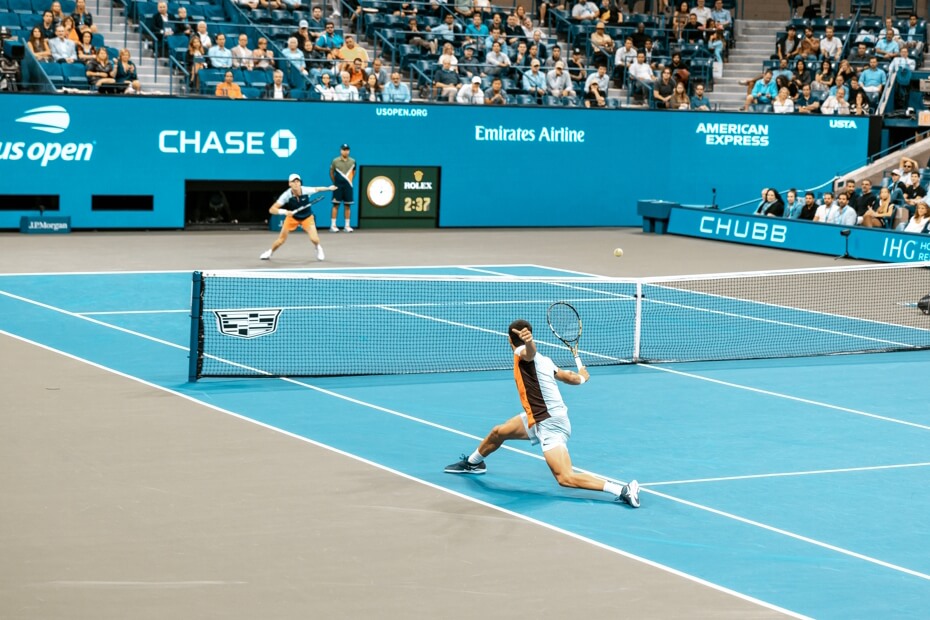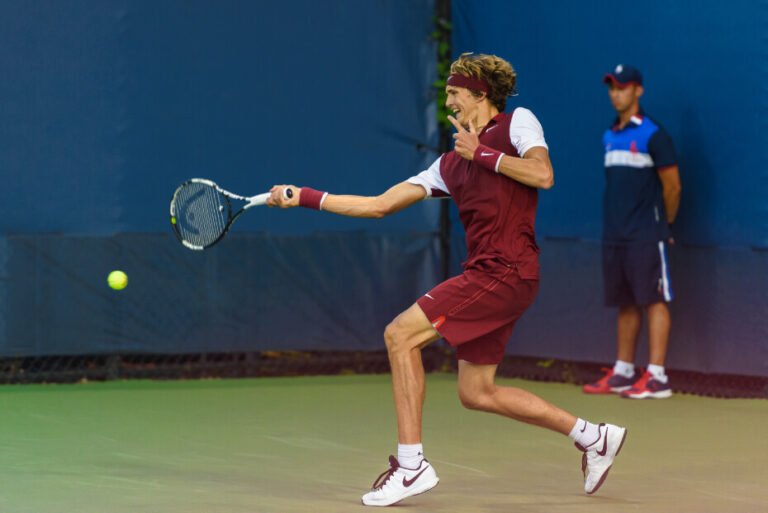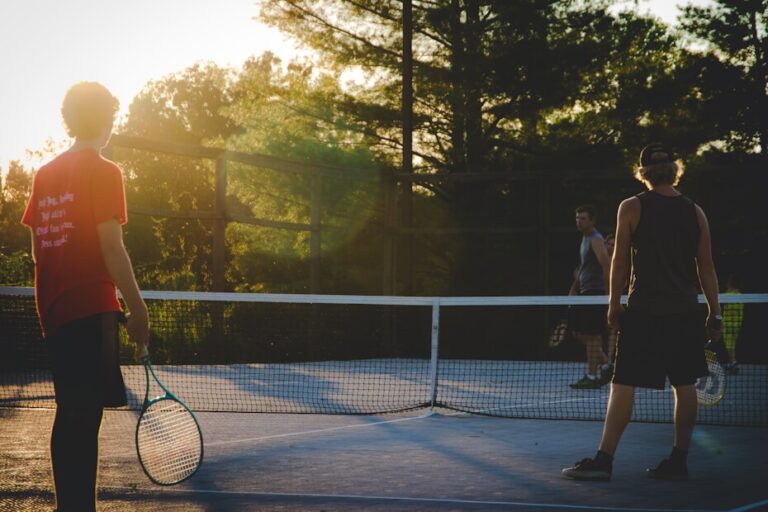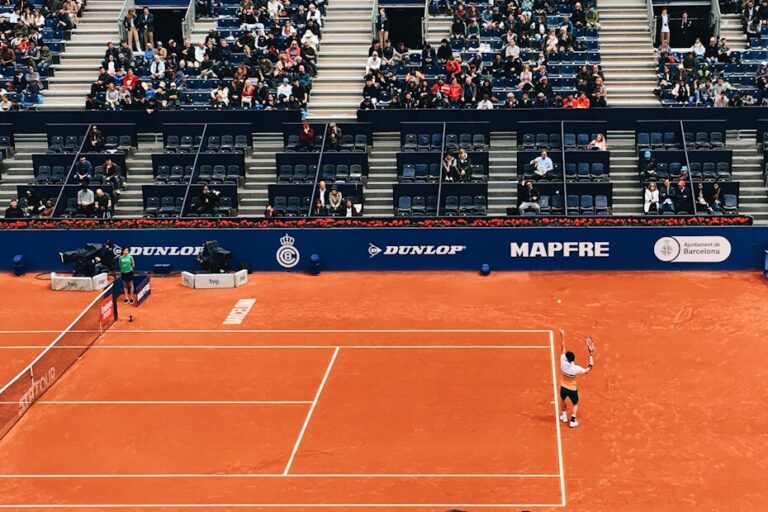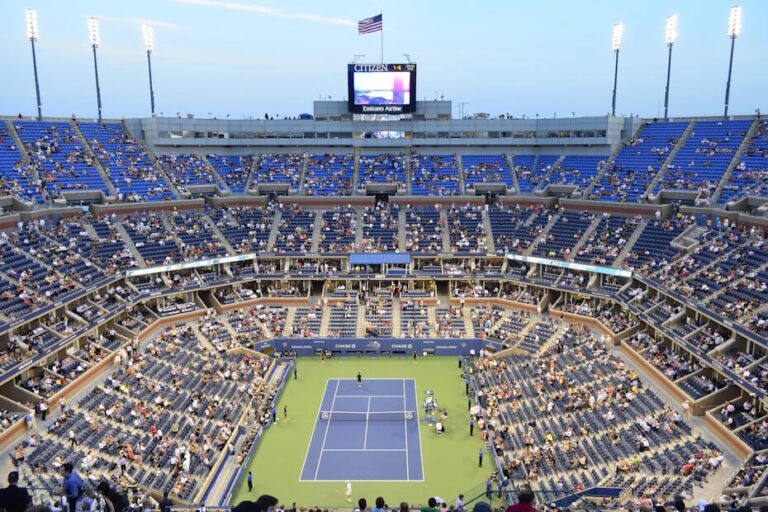When it comes to tennis, there are several terms that may be confusing for newcomers. One such term is “rallying.” So, what does rallying mean in tennis?
In simple terms, a rally in tennis is the continuous exchange of the tennis ball between players without any break in play during a single point. It begins when a player serves the ball and the opponent successfully returns it over the net. The back-and-forth hitting of the ball that follows marks the rally.
Rallies can vary in length and intensity, depending on the players’ skills and strategies. Some rallies may consist of just a few hits, while others can last for several back-and-forth exchanges.
Rallies in tennis showcase a player’s stamina and skill and can drastically change the course of a match. They pressure opponents to make errors or create openings, dictating game dynamics, testing players’ endurance and strategy, and creating noteworthy moments for spectators.
Strategies for Successful Rallying
Rallying in tennis isn’t just about keeping the ball in play. It involves a series of calculated on-court strategies designed to throw off your opponent. To win a rally, players must be consistent, have good stamina, and use effective strategies. Here are some common rallying strategies and tactics that players use to gain an advantage:
- Depth Over Power
Drive your shots deep into your opponent’s court instead of simply hitting harder. Deep shots make it difficult for the opponent to hit a successful return and control the rally.
- Attack Weaknesses
Observe and identify your opponent’s weaknesses and target them during rallies. If they struggle with their backhand, for example, aim to consistently hit the ball to that side to exploit their vulnerability.
- Creating Angles and Changing Direction
Creating angles and changing direction mid-rally can catch your opponent unaware. The player needs to hit the ball earlier to achieve an angle and change from down-the-line shots to cross-courts. A mathematical precision coupled with unpredictable variations can keep the opponent second-guessing and off-balance.
- Mixing Up Shot Selection and Pace
Varying shots and their pace contributes to effective rallying. Engaging in a strategic mix of slices, topspin shots, flat strokes, and different serve types keeps opponents guessing and disrupts their rhythm. It not only makes tennis rallies engaging but also improves overall gameplay.
Mental Aspects of Rallying
Rallying is a strategic exchange where precision, technique, and a lot of mental prowess come into full display. Incidentally, this is where the mental aspects of tennis turn out to be fundamental.
- Maintaining Focus and Concentration
An essential aspect of rallying is maintaining focus. With each ball that sails across the net, players are expected to stay alert and watch the ball, ensuring that they accurately read the speed, spin, and direction.
- Staying Patient and Avoiding Unforced Errors
Patience plays a pivotal role in rallying too. Players shouldn’t rush their shots or force winners, which can potentially lead to unforced errors—one of tennis’s most notorious game-changers.
- Adapting to Different Playing Styles and Conditions
Lastly, versatility aids successful rallying. Players must adapt their strategy based on their opponent’s playing style or the court’s varying conditions— all while keeping their focus, patience and making minimal mistakes. A balance of these elements contributes to effective rallying in tennis.
Rallying in Doubles
In doubles, rallying becomes more strategic and communicative. Guesswork is swapped for clear calls and signals from partners. Teamwork is crucial in this setup as players must work simultaneously to cover areas, cut off angles, protect their side and disrupt opponents’ play.
There are unique strategies for rallying in doubles that aren’t typically relevant for singles play. These include returning low balls to force difficult volleys, moving sideways at the net to pressure opponents into difficult shots, and dominating the net to put extra pressure on opponents. Furthermore, hitting shots at the feet of the net player helps put them at a disadvantage and enables you to win more points. Topspin-heavy groundstroke tactics can also be beneficial in keeping balls low and challenging to return.
Factors Affecting the Length of a Rally
The duration of a rally can vary greatly depending on several factors. One major factor is the skill level of the players involved. High-level players tend to have more control and accuracy in their shots, leading to longer rallies. On the other hand, beginners or less experienced players might struggle to keep the ball in play, resulting in shorter rallies.
The playing surface also plays a role in rally length. Surfaces like clay and grass tend to slow down the ball, making it easier for players to return shots and prolong rallies. Hard courts, on the other hand, provide a faster pace, leading to quicker points and shorter rallies.
The style of play can have a significant impact as well. Defensive players who prioritize consistency and retrieving every ball are more likely to engage in longer rallies. In contrast, aggressive players who go for winners and take risks may finish points quickly with fewer shots exchanged.
Lastly, fitness and endurance play a crucial role in determining rally length. Players with higher fitness levels can sustain longer rallies without getting tired, while fatigue may lead to shorter points.
Understanding these factors can help players strategize their gameplay accordingly and adapt to different opponents and conditions on the court.
Examples of Epic Rallies
In tennis history, there have been numerous rallies that have taken the breath away from spectators and players alike and cemented the game’s reputation as a physical and mental challenge. Here are some notable examples:
2013 US Open final: Rafael Nadal vs. Novak Djokovic (54-shot rally)
In what would go down as one of the most gripping matches in tennis history, Rafael Nadal faced Novak Djokovic. Known for their profound competitive rivalry, they created a truly unforgettable moment with a 54-shot rally. This left spectators spellbound, with the crowd erupting into enthusiastic applause after each shot.
2021 US Open: Novak Djokovic vs. Alexander Zverev (53-shot rally)
In this thrilling encounter, Djokovic and Zverev engaged in an epic 53-shot rally that left spectators in disbelief. The rally featured impressive shot variety, agility, and tireless court coverage from both players, highlighting their high-level skills and endurance.
1999 US Open: Pete Sampras vs. Andre Agassi (51-shot rally)
Another epic rally is remembered from the match between Pete Sampras and Andre Agassi at the 1999 US Open. They engaged in an intense 51-shot rally, a testament to their supreme athletic abilities. This show-stopping rally stood as a landmark moment in their remarkable rivalry.
Such rallies not only showcase players’ extraordinary skill and endurance but also enhance spectators’ excitement, adding depth to the sport.
The Longest Tennis Rally Ever Played
While most rallies consist of just a few shots, there are some exceptional ones that can go on for a considerable length of time.
The longest tennis rally ever played took place during the Virginia Slims tournament in 1984 between Vicki Nelson and Jean Hepner. These two talented players engaged in an incredible rally that lasted for a mind-boggling 29 minutes. They hit an astonishing 643 shots during a tiebreaker, leaving spectators in awe of their skill and determination.
Another notable example of a long rally took place between Simone Frediani and Daniele Pecci in an amateur match. They set a Guinness World Record by hitting an incredible 51,283 strokes during their rally, which lasted an astonishing 12 hours and 37 minutes. Their dedication and stamina during this marathon rally are truly commendable.
Long rallies like these are a testament to the players’ physical fitness, mental resilience, and perseverance. They highlight the demanding nature of the sport and the importance of endurance in succeeding on the tennis court.
These exceptional rallies captivate fans and make tennis such an exciting sport to watch. They serve as a reminder of the incredible determination and skill required to excel in this dynamic and fast-paced game.
